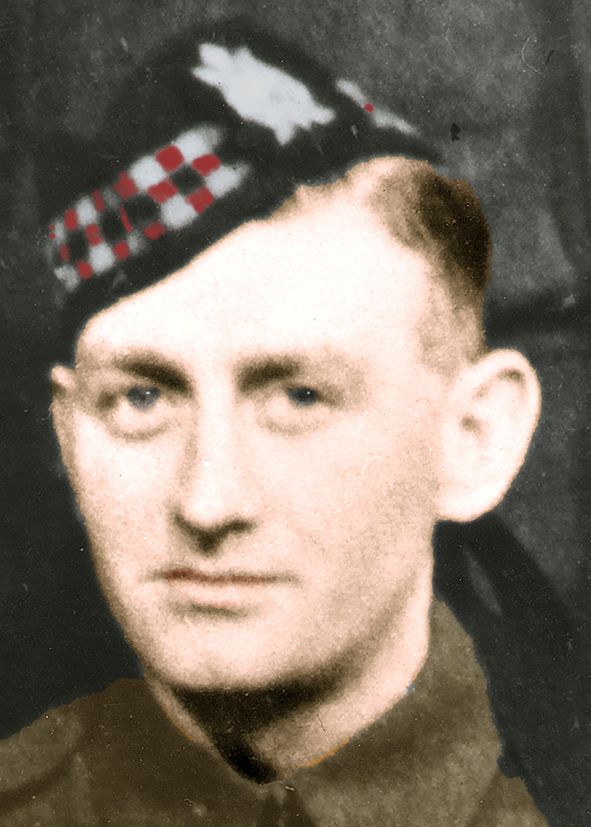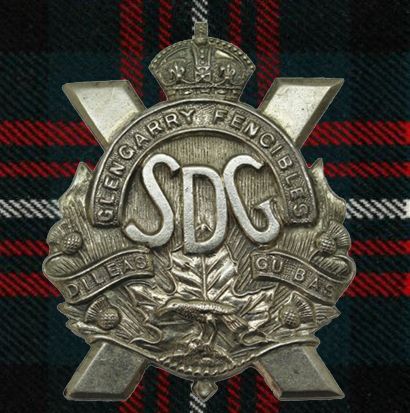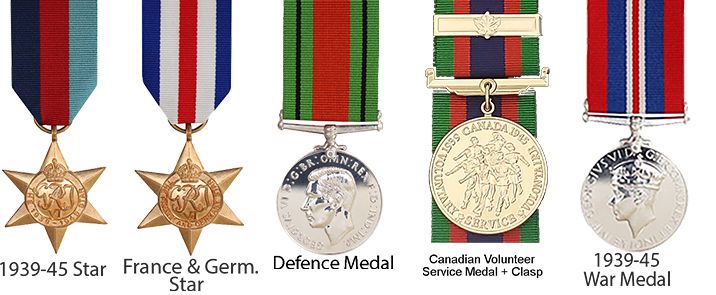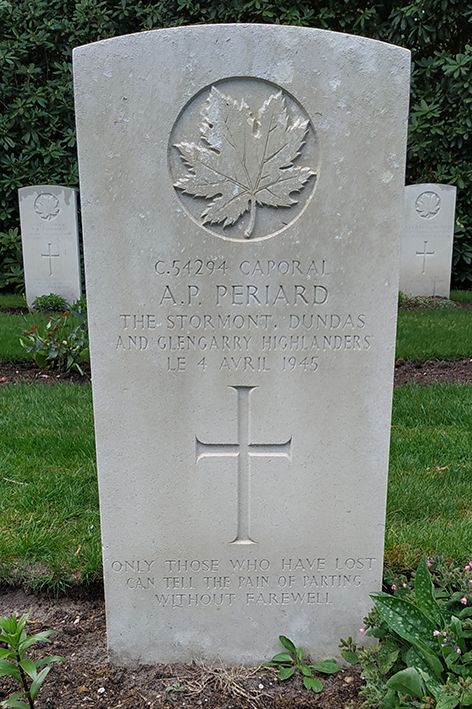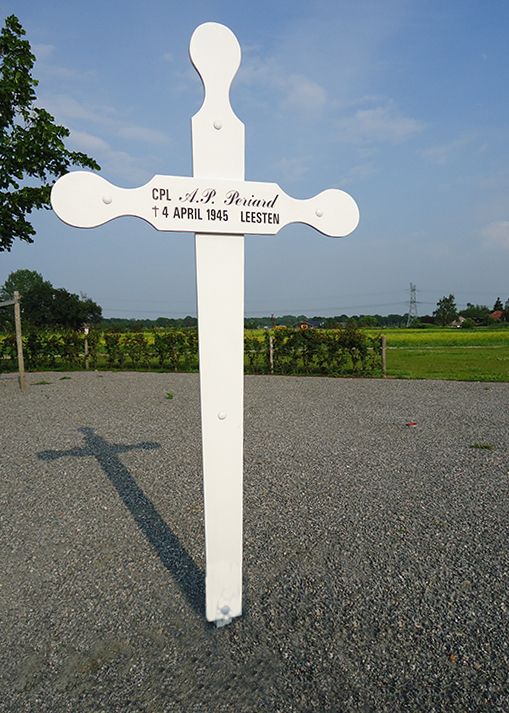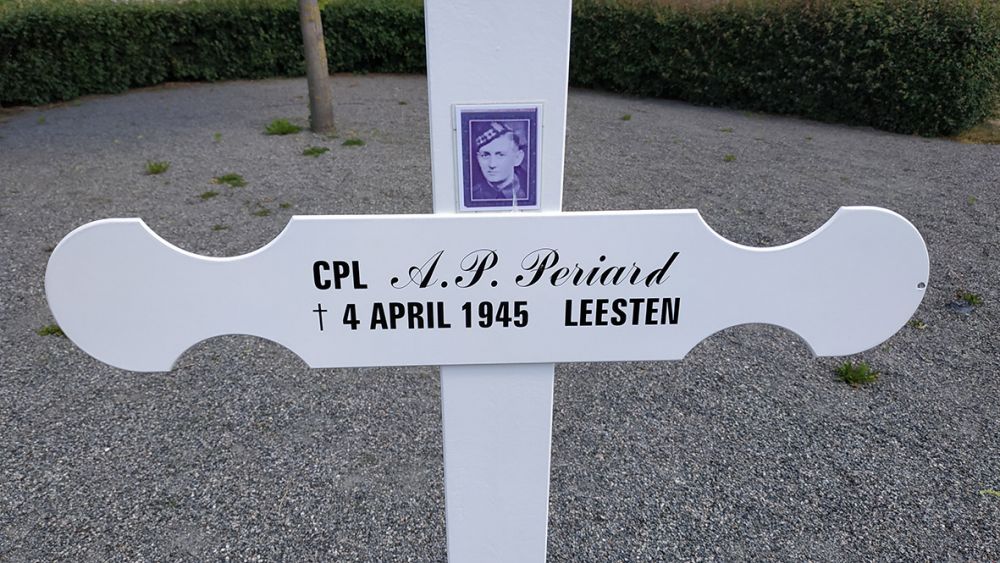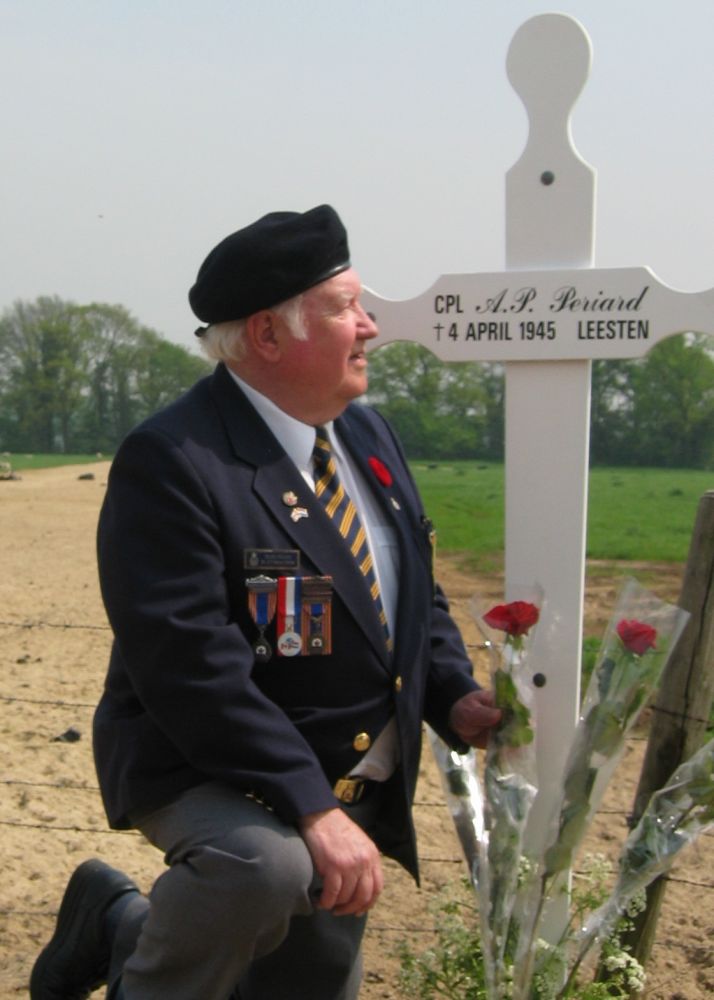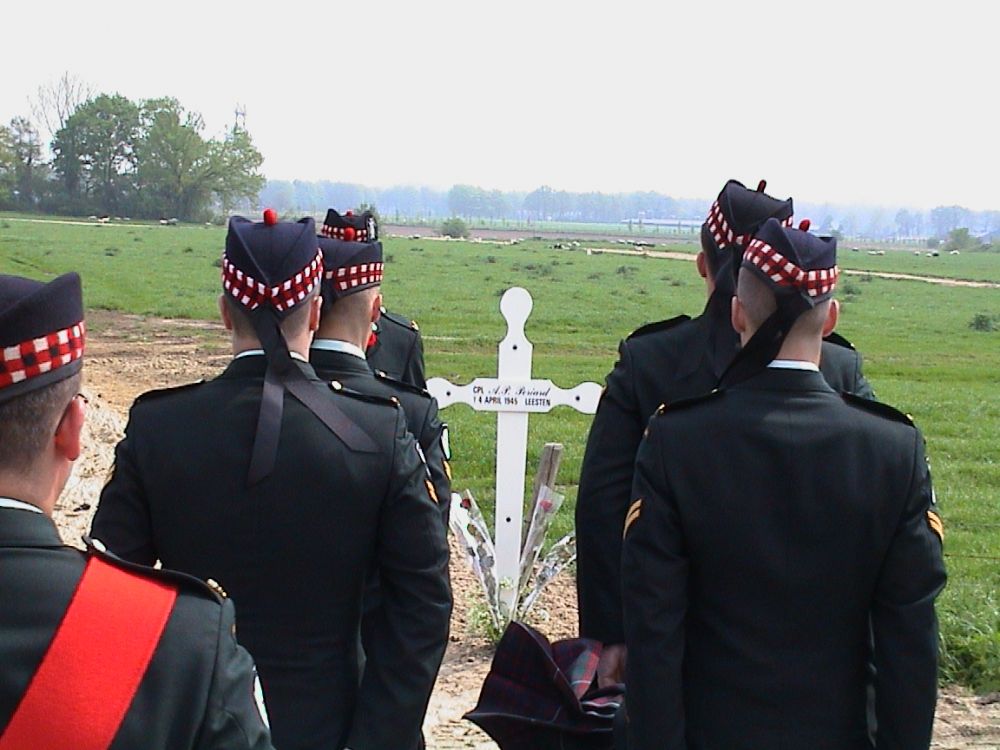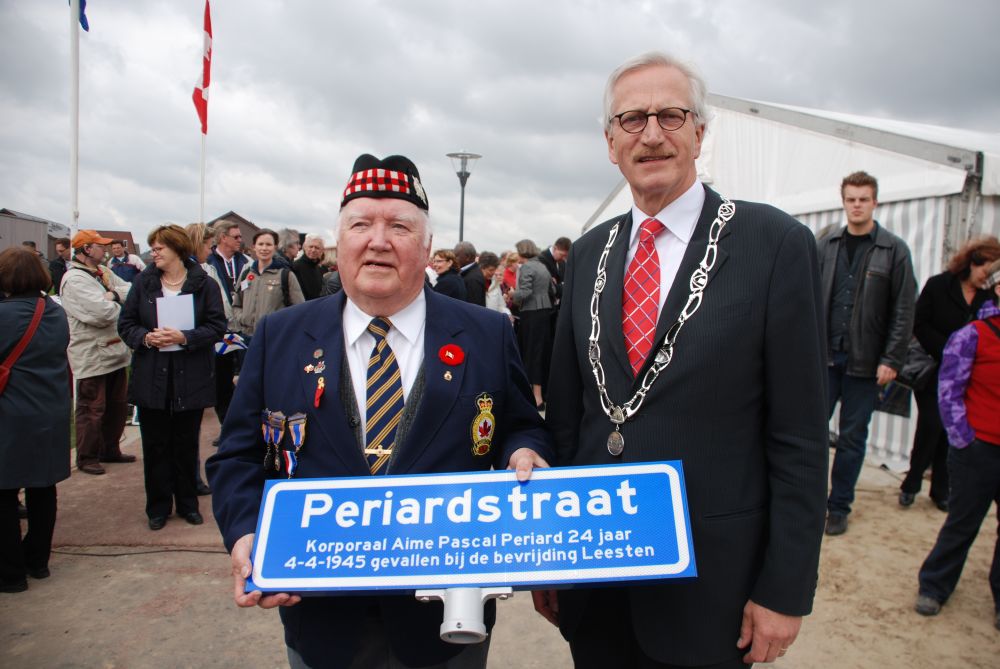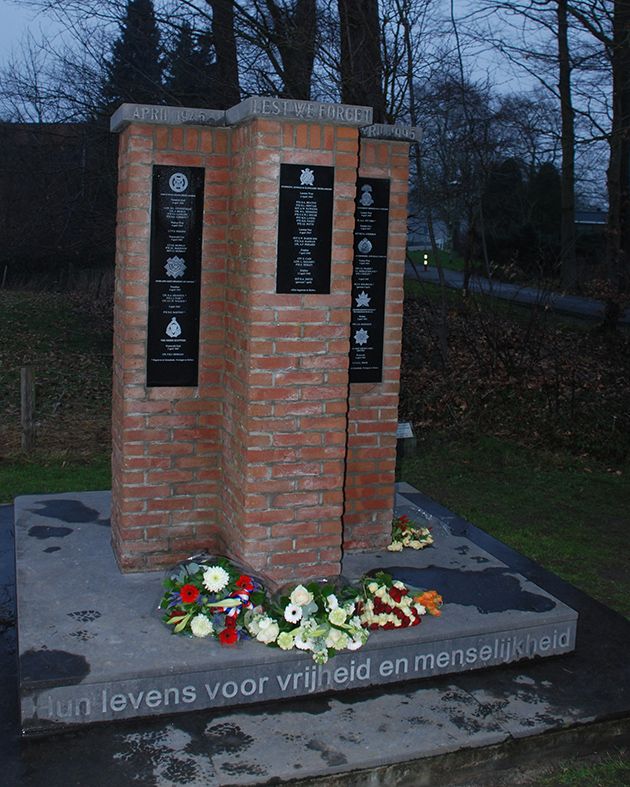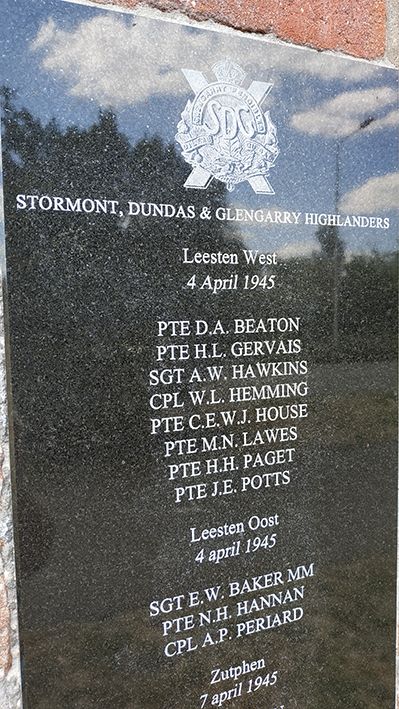corporal
Periard, Aimé Pascal
Service nummer C/54294
Overleden 1945-04-04
Leeftijd 25
The Stormont, Dundas and Glengarry Highlanders
Aimé Pascal Periard
werd geboren op 20 april 1919 als zoon van Herminie Periard en Yvonne Lebeau uit Alexandria, Ontario. Aimé heeft twee jongere broers, Arthur 1) en Frank 2)
Aimé bezoekt 8 jaar de “public school” en gaat op 15 jarige leeftijd aan het werk. Tot hij zich op 5 juli 1940 in Cornwall meldt voor zijn dienstplicht werkt hij 4 jaar bij Stimson Alexandria Bottling Works als flessenvuller. Aimé wordt gelijk ingedeeld bij het regiment van de Stormont Dundas and Glengarry Highlanders (de Glens) en vertrekt na zijn basic training in juli 1941 naar Debert, Nova Scotia, wat een verzamelpunt is voor troepen die naar Engeland afreizen. In een van zijn vele brieven naar huis vermeldt Aimé dat hij een meisje heeft ontmoet in Engeland waar hij verliefd op is geworden en waar hij na de oorlog een toekomst mee op wil bouwen. Zover mag het helaas niet komen.
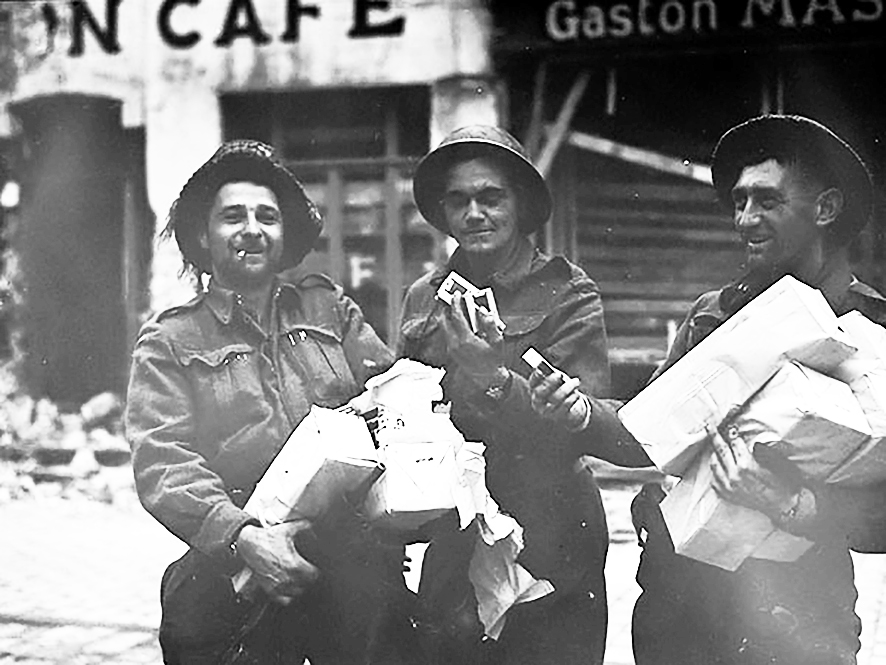
Aimé Periard (rechts op de foto) en twee andere Glens laten in de Franse kustplaats Boulogne trots hun nieuwe voorraad sigaretten zien. (Bron: Library and Archives Canada)
Op D-day, 6 juni 1944, landt hij met zijn regiment op Juno Beach bij Bernière sur Mere in Normandië. In de 10 maanden die daarop volgen gaan de Glens noordwaarts en voor zij op 4 april 1945 in Leesten aankomen heeft het regiment al zware verliezen geleden.
Als de Glens op 4 april 1945 om 4 uur in de ochtend vertrekken begint het net licht te worden en hebben ze al 2 dagen niet geslapen. De 3 pelotons die richting de Kerkhofweg optrekken ondervinden hevige tegenstand. Op het open terrein worden zij aan weerszijden van de Looerenk beschoten door machinegeweer vuur en scherpschutters. Het zijn fanatieke leden van de Hitlerjugend die vechten tot het bittere eind. Aimé wordt in deze strijd dodelijk getroffen.
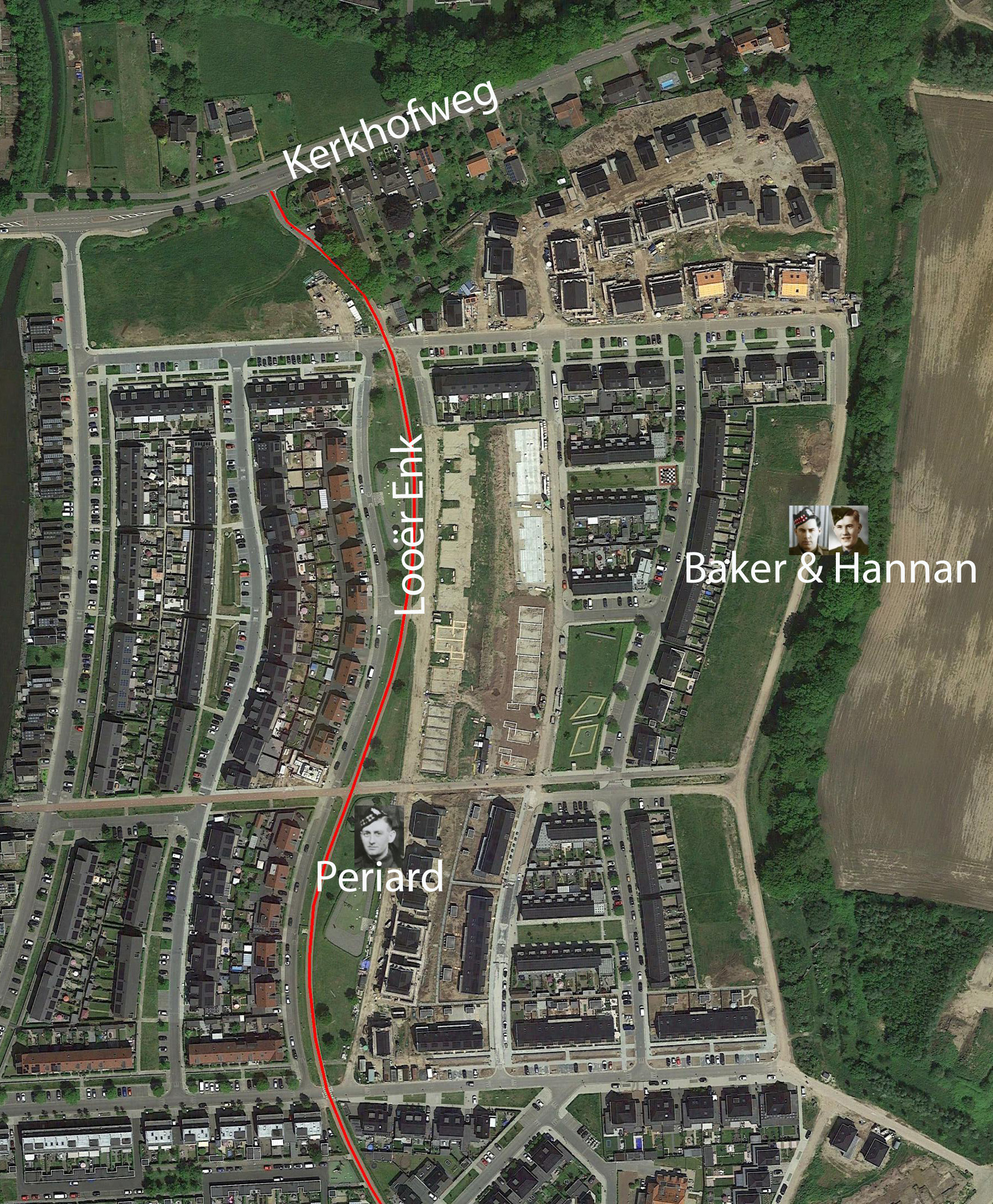
De huidige situatie aan de Looër Enk in Leesten Oost en de plekken waar Periard, Baker en Hannan zijn gesneuveld.
Bij de gevechten op de Looerenk waren 3 pelotons betrokken: nr 13,14 en 15. Leutenant Moore,de commandant van het 15de peloton , stuurde in augustus 1945 onderstaand verslag naar de Periard familie.
“We were advancing on Zutphen and our job was to clear a start line for the NNSH’s who were to make the initial assault. Then we were to pass through and map up inside the city. We started from our last objective of the day before, which we finally reached at 04.00hrs and it was just becoming first light when the push began. Consequently we had had no sleep for two days. The first two objectives were pushovers and at 10.00 hrs we started our last drive to approach the road, our last objective.
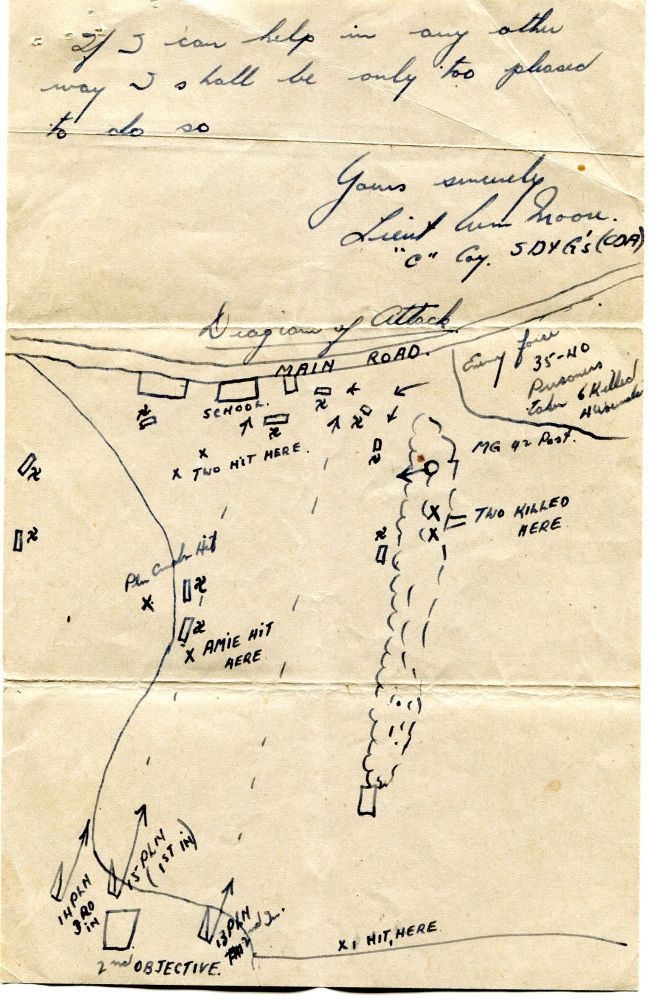
We had just started and we came under very heavy machine gun and sniper fire. The company was pinned down. It was decided by the Company Commander that my platoon being the spearhead of the attack should advance under artillery support, 50 calibre and flame throwers to take out a school house just sitting to one side of the road. This entailed travelling over a distance of 400 yards of ground with no cover. Thirteen platoon was to exploit and to help hold the position until further help could be brought up in case of counter attack. We (15) went in and suffered only four casualties. Fourteen Platoon, Amis platoon was to follow us in on the left flank. The platoon commander was leading the platoon down the field followed by Amis section. The platoon commander was hit and Amie was killed by the same gun which appeared up from the left flank. All the men killed in the attack on that objective are buried at the same spot and all together. Ernie Baker (Sgt) and Ken Hannan (Private) are on each side of Amies grave. They are at the churchyard at Wichmond about 5 kilometers outside of Zutphen."
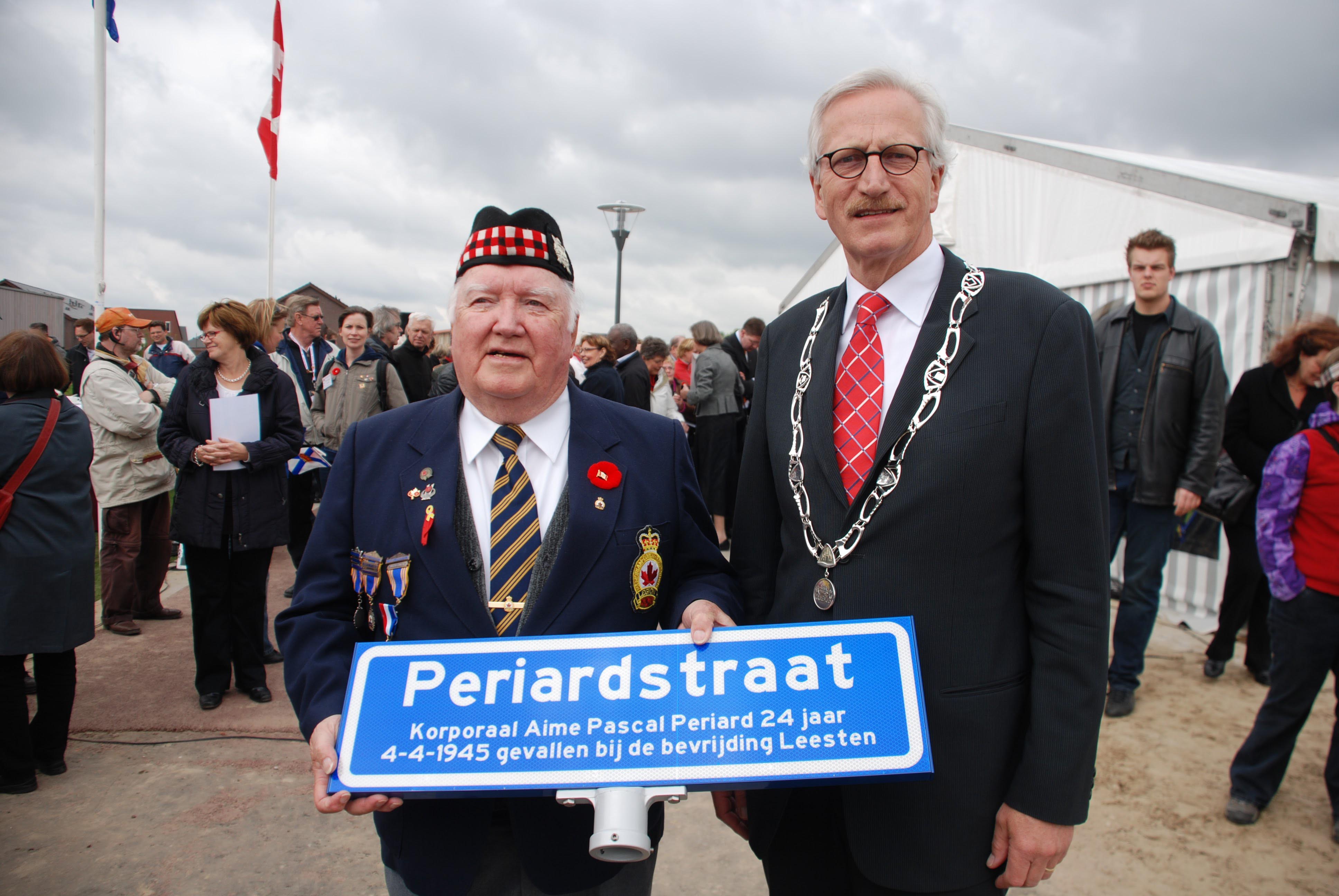
Op 5 mei 2010 kreeg Frank Periard dit straatnaambord overhandigd van de burgemeester van Zutphen dhr. Arnold Gerritsen.
Corporal Aimé Pascal Periard wordt tijdelijk begraven bij de RK kerk tussen Vierakker en Wichmond en kreeg op 1 april 1946 zijn definitieve rustplaats op de Canadian War Cemetery in Holten, graf XII.F.8
1) Arthur, de oudere broer van Aimé, was een begaafd organist die tijdens de oorlog zelfs op het orgel van de Westminster Abbey in Londen heeft gespeeld en dat terwijl hij eigenlijk geen noot kon lezen. Hij was in WW2 o.a. als brancarddrager 54 maanden actief. Hij kwam in 1954 op tragische wijze om het leven bij een auto ongeluk in St Jérôme, Quebec en mocht slechts 33 jaar worden.
2) Frank, lokaal in Alexandria ook bekend onder de naam “Guidou” was 7 jaar jonger dan Aimé en bezocht Warnsveld diverse keren. Ter gelegenheid van zijn eerste bezoek werd een wit kruisje geplaatst op de plek waar zijn broer sneuvelde. Bij de inrichting van de nieuwe wijk in Leesten Oost kreeg dit kruis een definitieve plek in een perkje. Hier wordt jaarlijks rond 4 april een korte herdenking gehouden door leerlingen van de Lea Dasbergschool die het kruisje geadopteerd hebben. In 2005 werden 10 straten en een brug genoemd naar de gesneuvelde Glens. Eén van de straten draagt de naam Periardstraat.

Aimé Pascal Periard was born on April 20, 1919 as the son of Herminie Periard and Yvonne Lebeau from Alexandria, Ontario. Aimé had two younger brothers, Arthur 1) and Frank 2).
Aimé attended the “public school” for 8 years and started working at the age of 15. Until he enlisted for military service in Cornwall on July 5, 1940, he worked for 4 years at Stimson Alexandria Bottling Works as a bottle filler. He was attached to the Stormont Dundas and Glengarry Highlanders (the Glens) regiment and, after basic training he left in July 1941 for Debert, Nova Scotia, which is a rally point for troops traveling to England. In one of his many letters home, he mentioned that he met a girl in England with whom he fell in love and wanted to build a future after the war. Unfortunately, it should not come to past.

Aimé Periard (on the right) and two other Glens proudly display their new stock of cigarettes in the French coastal town of Boulogne. (Source: Library and Archives Canada)
On D-day, June 6, 1944, he landed with his regiment at Juno Beach near Bernière sur Mere in Normandy. In the 10 months that followed, the Glens went north and before arriving in Leesten on April 4, 1945, the regiment had already suffered heavy losses.
When the Glens leave at 4 in the morning on April 4, 1945, it just starts to get light and they have not slept for 2 days. The 3 platoons advancing towards Kerkhofweg encounter fierce opposition. On both sides of the Looerenk they are fired upon by machine gun fire and snipers in the open terrain. They are fanatical members of the Hitler Youth and Fallschirmjäger Ersatz und Ausbildungs Regiment who fight to the very end. In this battle Aimé got fatally hit.

The current situation at the Looër Enk in Leesten East and the places where Periard, Baker and Hannan were killed.
Three platoons were involved in the fighting on the Looerenk: no’s 13, 14 and 15. Lieutenant Moore, the commander of the 15th platoon, sent the following report to the Periard family in August 1945.
"We were advancing to Zutphen and our task was to clear a starting line for the NNSHs who would make the first attack. Then we had to pass and map the city. We started from our last goal of the day before, which we finally reached at 4am and it was just getting the first light when the push started. Consequently we hadn't slept for two days. The first two objectives were pushovers and at 10am we started our final drive to approach the road, at last.

We had just started and came under very heavy machine gun and sniper fire The company was stuck It was decided by the company commander that my platoon to spearhead the attack with artillery support, 50 caliber and flamethrowers to destroy a school building that was just on one side of the road. This meant traveling a distance of 400 meters of ground without cover. Thirteen platoons had to exploit and help maintain position. until further assistance could be provided in the event of a counterattack. We (15) went in and suffered only four victims. Fourteen platoon, Aime’s platoon would follow us on the left flank. The platoon commander led the platoon off the field, followed by the Aime’s section. The platoon commander was hit and Amie was killed by the same cannon that appeared from the left flank. All men killed in the attack on that target are all buried in the same place. Ernie Baker (Sgt) and Ken Hannan (Private) are on opposite sides of Amie's grave. They are located in the cemetery in Wichmond about 5 kilometers outside Zutphen."

On May 5, 2010 this street sign was presented to Frank Periard by the mayor of Zutphen mr. Arnold Gerritsen.
Corporal Aimé Pascal Periard is temporarily buried at the Roman Catholic Church between Vierakker and Wichmond and was given his final resting place on April 1, 1946 at the Canadian War Cemetery in Holten, grave XII.F.8
1) Arthur, Aimé's older brother, was a gifted organist who even played the organ of Westminster Abbey in London during the war, even though he couldn't actually read a note. During WW2 he was active for 54 months as a stretcher bearer. He was tragically killed in a car accident in St Jérôme, Quebec in 1954 and was only 33 years old.
2) Frank, also known locally in Alexandria as “Guidou”, was 7 years younger than Aimé and visited Warnsveld several times. On the occasion of his first visit, a white cross was placed on the spot where his brother died. This cross was given a exact place in a flowerbed during the design of the new district in Leesten Oost. A short commemoration is held here every year around April 4 by students of the Lea Dasberg School who have adopted the cross. In 2005, 10 streets and a bridge were named after the fallen Glens. One of the streets bears the name Periardstraat.
